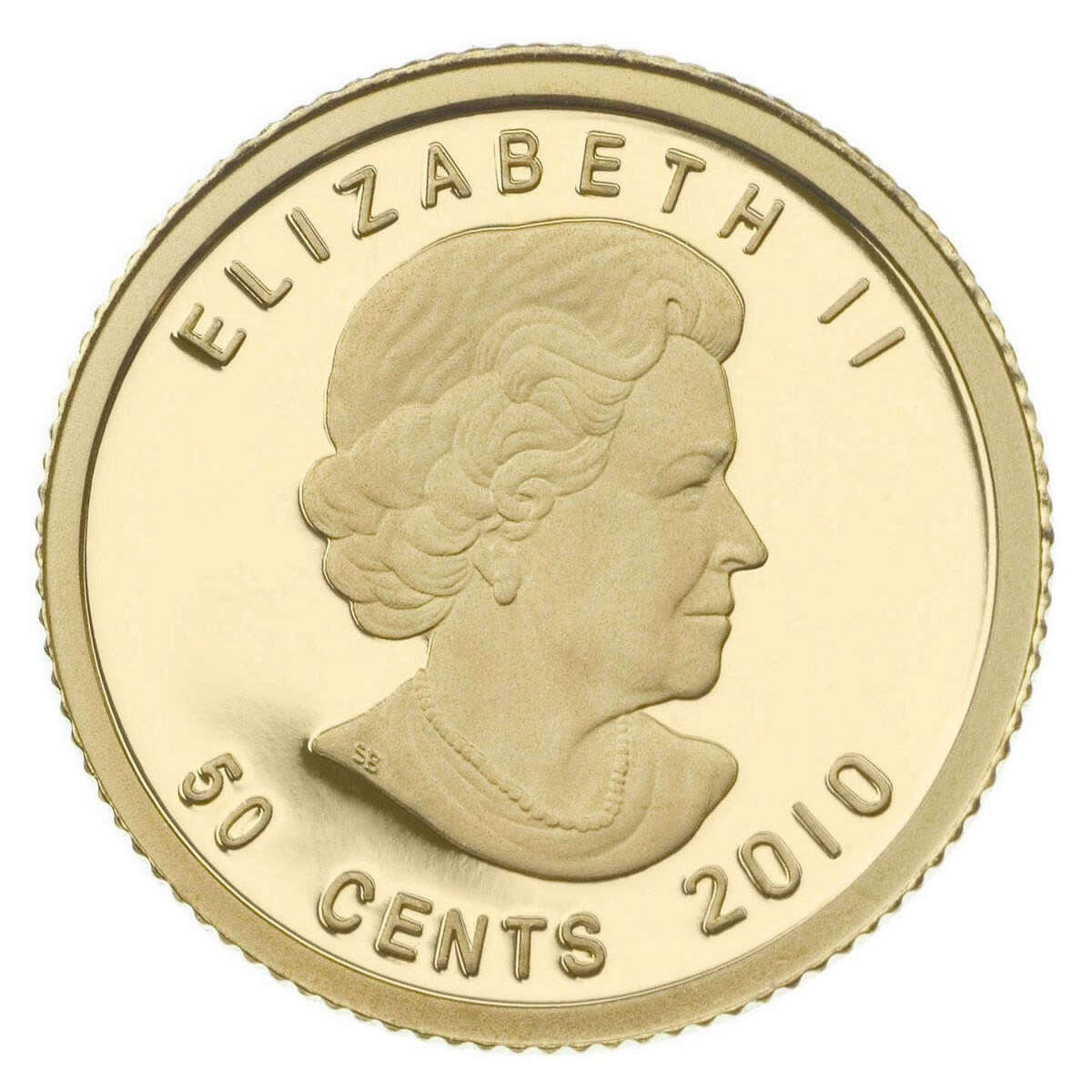Description
With its delicate size, this exquisitely-crafted 2010 50 cent coin is an object of pure intrigue, its collectability heightened by its pure gold composition and reduced mintage. This coin is a stunning example of the remarkable detail a skilled hand can capture within a small surface. Mintage is limited to 14,000 coins. HST/GST exempt.
The Design:
An RCMP officer astride his horse, both in a posture of pride.
Royal Canadian Mounted Police:
Canada’s national police force was originally known as the North-West Mounted Police. They were founded in 1873, and after a period of training, two hundred and seventy-five police officers were dispatched to patrol the western frontier.
Their objective: to establish law and order, suppress the whiskey trade, bring unruly desperados to justice and establish positive relations with the First Nations people of the area—quite a challenge considering there were no facilities when they arrived.
The men were entirely on their own. Communication with the East involved a 322 km (200 mi) ride to Montana (USA). The men set about building a hospital, shelter for the horses, followed by sleeping quarters for the men and officers. With the help of local settlers and native groups, they were able to gather enough supplies to see them through the winter.
Recruits were required to know how to ride, but little attention was given to the finer points of military riding. Formal cavalry drills began in 1885as the force was approaching 1,000 men. Fifty years later, the wife of one of the original British Cavalry Sergeant who trained the men remarked how the maneuvers at the 1935 Exhibition and Stampede were identical to the original drills—a grand display of horsemanship set to music that continues to delight audiences the world over as the Musical Ride.
In 1920, the Force became known as the Royal Canadian Mounted Police (RCMP). Today, it is a world-renowned organization with more than28,000 members. The spirit and history of the RCMP is woven into the history of the prairies. The cities of Calgary (Alberta) and Regina (Saskatchewan) both originated as NWMP posts—and the buffalo on the RCMP crest recalls the untamed frontier that greeted its first recruits over a century ago.
Their objective: to establish law and order, suppress the whiskey trade, bring unruly desperados to justice and establish positive relations with the First Nations people of the area—quite a challenge considering there were no facilities when they arrived.
The men were entirely on their own. Communication with the East involved a 322 km (200 mi) ride to Montana (USA). The men set about building a hospital, shelter for the horses, followed by sleeping quarters for the men and officers. With the help of local settlers and native groups, they were able to gather enough supplies to see them through the winter.
Recruits were required to know how to ride, but little attention was given to the finer points of military riding. Formal cavalry drills began in 1885as the force was approaching 1,000 men. Fifty years later, the wife of one of the original British Cavalry Sergeant who trained the men remarked how the maneuvers at the 1935 Exhibition and Stampede were identical to the original drills—a grand display of horsemanship set to music that continues to delight audiences the world over as the Musical Ride.
In 1920, the Force became known as the Royal Canadian Mounted Police (RCMP). Today, it is a world-renowned organization with more than28,000 members. The spirit and history of the RCMP is woven into the history of the prairies. The cities of Calgary (Alberta) and Regina (Saskatchewan) both originated as NWMP posts—and the buffalo on the RCMP crest recalls the untamed frontier that greeted its first recruits over a century ago.
**This product features dynamic pricing, which adjusts in real-time based on spot metal market prices. The price may fluctuate to reflect current market conditions, ensuring accurate and competitive pricing at the time of purchase.**





